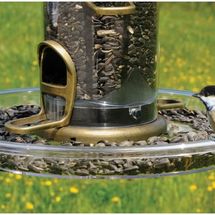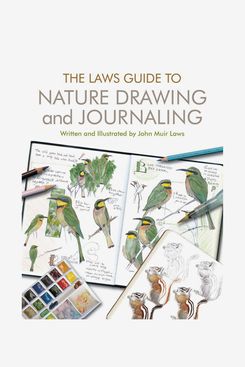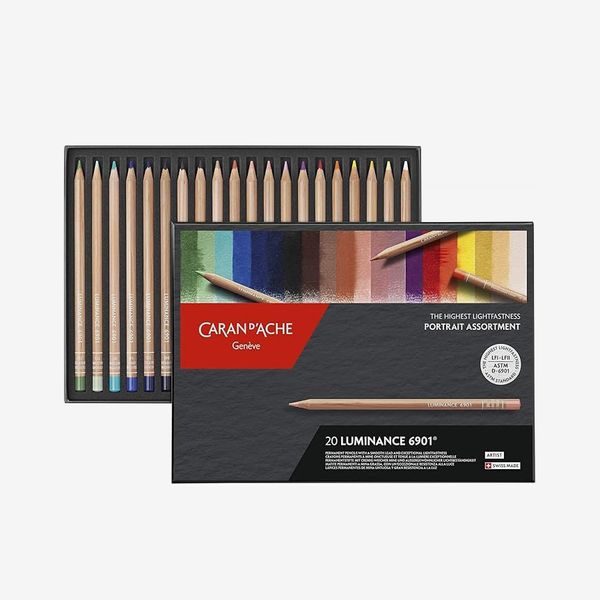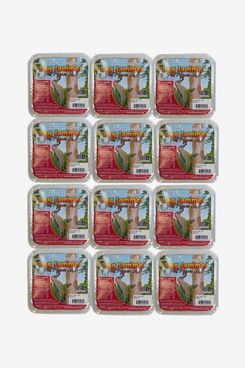
I’ve always loved wildlife, but it wasn’t until 2016 that I started to notice the nature around me, locally. It was because of the amount of racism happening then, and it leaned heavily toward Asian Americans. I felt it directly and it was really frightening. I needed to get out of my head, so I went into nature where I could find beauty instead of ugliness, and eventually, by taking classes, I started to nature-journal about the birds in my backyard.
When I was a kid, I took the usual art classes that one does in junior high school, but no other art lessons, though I loved to draw. I loved the solitude of being in my room and not having the noise of my family there. I’d go into my room and read or draw when things got chaotic or stressful. There’s refuge in the arts, that is where you freely express yourself.
I spend too many hours now in my backyard drawing birds. I should be writing. I should be doing other things. I’m now sitting in front of about 12 feet of expansive window doors. What I see in front of me are the feeders, the trees, the bushes, and the birds. I’m here all day.
When I was selecting drawings for the book, there were about nine journals and a scattering of loose pages. I chose the drawings on the basis of having a variety of species, but also behaviors and seasons.
In terms of equipment and feeders, I love problem solving. I’m always thinking of ways that other people can enjoy birds. Bird feeders can be very expensive. Some that are store bought are $80. Not everyone can afford that. I want people to be involved with birds. When people love birds, they will be more likely to get into the conservation of birds.
I came up with constructing a cage — cages all around where birds can go in and I could put the cages on the ground. I made a DIY feeder from grid panels, lashed together with zip ties. I lashed the top, bottom, and sides. One side is unzipped to serve as a door so I can add food. I use a binder clamp to keep the door closed. It comes with a black vinyl top and bottom, which is useful in case of rain. I’m a very stubborn person and when somebody tells me I can’t do something, I have to make sure I really can’t do it. I was told that ground feeders — that is, sparrows — do not eat from feeders. Once they started going into these feeders, I just raised them higher and higher.
I actually have like 15 feeders. There are problems with some feeders. One is that you need to clean the feeder and others I’ve had you can’t get to the bottom where the mold was. When rain gets into seeds, they mold. And what happens with a lot of birds is that they throw out about five seeds for every one that they eat. That attracts rats. So I found this one that has a pan underneath to catch all the seeds they discard. The dome and tube come apart and I can clean whatever I need to.
Mine has a little glass bowl with slippery sides. The mealworms can’t climb over the edges. And you don’t want to put too many in because you’ll go broke. Mealworms are very expensive. With this special feeder, the bowl sits in the middle, and the birds that you won’t want to eat the mealworms, like the crows and the scrub-jays, can’t get in.
This was a gift for me, and at first I was like, oh, I see enough birds. But then I decided to try it, and I’m so glad because I was gone a lot on book tour and I was missing the fledgling season. I was missing all these great things that were happening in the yard and now I could see them. I get the funniest videos. It’s super sensitive, and you get color video, but at first it was alerting me hundreds of times a day. I had to control myself and not look every single time. Another feature is that I can talk to the birds. If I see a bird that’s really hogging the feeder, like a huge pigeon, I can get on there and say, “Hey, what are you doing?” They’re looking around like, what? Who is talking to us? And then they disperse. It’s fun, the interaction.
I use these because I had them available. They look kind of nice, but they are a little porous, so I have to scrub them almost every day to get rid of the algae that can collect. I use hydrogen peroxide and let them sit for two minutes in it to clean the algae. People could use other kinds of bowls, whether a nice plastic, glass, or metal. It depends on what you like in your garden. The main thing is to have a shallow bowl, not a deep fountain bowl because most birds cannot swim. They don’t float like ducks and they can drown.
My feeder stand is a planter station where you have arms and can hang flower pots. I added a concrete base to withstand the wind.
I have a number of binoculars of the standard size for most people who watch birds (8x42), but I realized that I want to take my binoculars with me everywhere and not have to decide between them or another pair of shoes. For a while I was traveling with just the shoes I was wearing because I do carry-on only, and the binoculars were too big. These are a lot smaller and I usually have them around my neck all day. They weigh 12 ounces, and I can always have them when I’m traveling. And sometimes I’ll wear them out to the store or someone’s house thinking I might see a bird. It allows me to birdwatch wherever I go. If I’m going to see a play, I’ll also bring them along. They’re about the same size as opera glasses.
First, I took classes in person from John Muir Laws but there were only once a month. Being in front of him was important because of his enthusiasm and his way of communicating the importance of observation and loving nature. But the books, this one and The Laws Guide to Drawing Birds, were what I could use to refine my skills as I was practicing. I would practice every day drawing birds in different configurations, different head angles. It enabled me to quickly draw birds, because their positions are fixed in my mind. Because I’ve drawn this chickadee a thousand times, I know how to draw it without having to go back and forth to look at it. Birds only stay there for a couple of seconds. And anyone can learn to do this if they practice.
At first I just went crazy with supplies. Eventually I discovered these pencils. They had exactly the right degree of smoothness and waxiness. The tips didn’t break if I pressed down on them. And this also has to do with the smooth paper I use.
I have a little palette the size of a credit card and this aquabrush which has water in it. If you’re out in the field and doing rapid sketches, it’s hard to have equipment with you. With a regular brush you’d need a bowl of water and you’d have to clean it off and balance all these things. With the aquabrush you just need to dip it into the palette, and I have a little sock band, an old gym sock that I’ve cut into pieces and I brush it across it a few times and I’m ready for a new color.
I started off with a 0.5 mm and a 4B, which is pretty thick and dark and smudges a lot. It’s easier to do outlines with a pencil that’s not quite as dark. Also, I don’t want to have to sharpen my pencils every five minutes. The mechanical allows you to just press a button and it advances the lead. It’s all about compactness when you’re doing nature journaling.
I had a problem with crows taking over the feeders, and I know that they mourn their dead comrades. So I bought a dead crow for about $14 from Wild Birds Unlimited. I hung it upside down, the crows came and screamed and screamed and then they stopped coming to the yard. They’ll come to the side and look, but they’re not in the yard using the feeders.
A lot of people have problems with crows and with other animals. How do you stop an animal but not harm them? I found solutions for each animal. I don’t use poison. It’s inhumane. I use hot-pepper suet and hot-pepper sunflower seeds to keep squirrels away. The squirrels took one bite and never came back.
Another thing I need to mention are window strikes. I was looking for a solution that would not cost very much money because I wanted to tell people that you could prevent collisions easily. I found white acrylic pens like Sharpies and I drew spider webs that are interconnected with other spider webs. You have to draw on the outside of the window because the reflection is on the outside. You make radiating lines and loops with no openings greater than two to three inches. The birds see that and they put on the brakes. If you just put a sticker here or there, they will go through the openings between the stickers. This is my one-dollar way of having people make their windows collision free.
The Strategist is designed to surface useful, expert recommendations for things to buy across the vast e-commerce landscape. Every product is independently selected by our team of editors, whom you can read about here. We update links when possible, but note that deals can expire and all prices are subject to change.






















